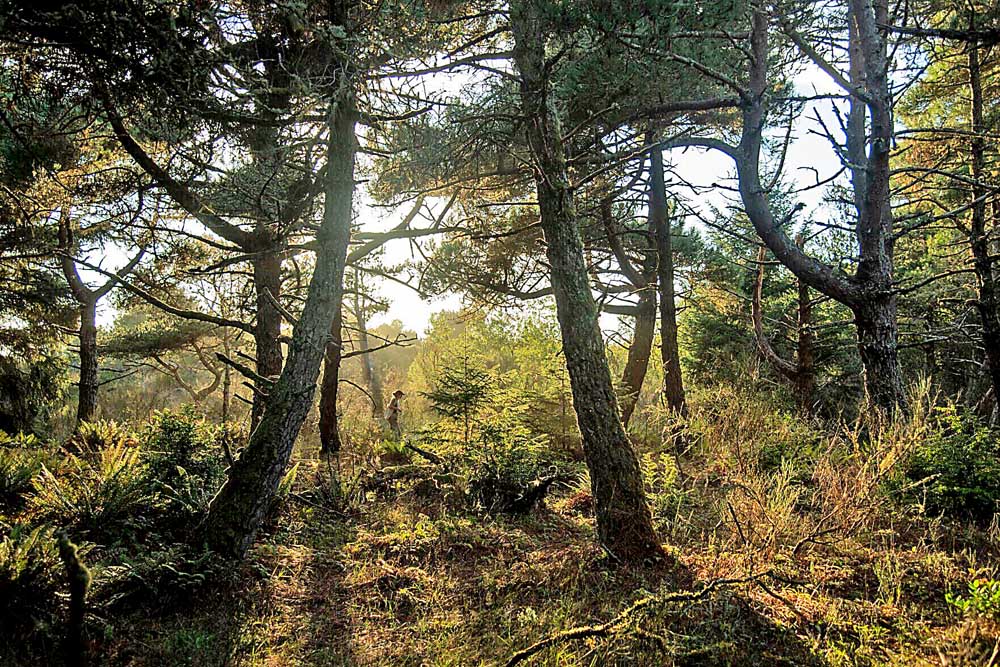Savor wild mushrooms: Relish them but don’t be greedy
Published 7:24 am Monday, September 16, 2024

- A mushroom forager at Nehalem Bay State Park.
Fall is the ideal time to look for wild mushrooms in the Columbia-Pacific region, and the season ahead is drawing attention.
For foragers who await this time of year, there is a certain freedom, a grasp for a primitive soul, that is associated with a solitary trip into the deep forest.
There are so many different varieties of wild mushrooms in the forests near the banks of the Columbia River, but at least a dozen varieties add an elevated level of flavor and pleasure to local cuisine.
Not everyone appreciates savory fungi, but over the years, this writer has witnessed the number of wild mushroom enthusiasts increase dramatically. We are what we eat, as the saying goes, and folks have come to appreciate the special flavors of these and other wild things.
Fifty-some years ago, few people cared about wild mushrooms. Today, the gold rush is on.
A pound of lobster mushrooms was listed recently at a nudge under $40 in an upbeat grocery store. It’s early in the season. The Boletus edulis — the king bolete — haven’t yet sprouted. What price will the king of mushrooms bring?
And then there is the matsutake. Both varieties are considered delectable, rare and expensive.
From my perspective, the field of competitors has changed nearly everything. Every treasured spot that I hunted years ago has been overtaken by the seekers of these savory delectables.
The mushrooms have been stomped down, cut down, kicked over and crushed by hordes of stampeding feet, but mostly collected for a bounty from organized buyers. Therein lies a concern. Mushrooms are slowly disappearing from the landscape.
Nonetheless, they can still be found in people’s backyards, in the tall beach grasses or on a stroll in your friendly forest. The king bolete loves Sitka spruce, a host tree. The saffron milk cap prefers pine needles. Oyster mushrooms grow on the decaying bark of a dead alder tree.
Do not gather them in a national park or refuge. The fine is heavy and it’s just not worth it.
There is no problem as to what to do with them. They can be sauteed, roasted, baked and boiled. The lobster mushroom is dense but very pleasant when softened by slowly simmering in a stew.
Be careful: some varieties are poisonous and deadly. Be sure you know what you are picking.
Even in small quantities, the golden chanterelle and its many cousins bring great satisfaction to the table. Walking a forest path to find them is invigorating. Identifying new species is a revelation.
But remember a few common practices: Help yourself, but don’t take too much. Carefully cut the mushrooms just above the ground, then cover up the ground. Leave the big, soft ones to drop their spores. Don’t take the babies. The word for today is courtesy — and please, don’t trespass.
When you bring the treasures home, dust them off with a soft brush. Do not wash.
One simple recipe is to saute the sliced, cut or torn mushrooms in a mixture of half olive oil and butter. Add chopped garlic and saute for a few minutes, then quickly pour in 4 tablespoons of brandy. It will flame, so stand back. When the liquor burns off, add 1/2 cup each of cream and homemade chicken stock, then reduce the liquid to about half. Add 1/2 cup chopped fresh herbs, such as basil or parsley.
Fill an omelet, add to pasta or pour over rice. The delicate saffron milk cap is perfect for turkey stuffing. The small orange and green mushroom — a chameleon — makes a fine duxelle.
The beauty of the wild mushroom is that one’s choices are infinite, or nearly so. Breakfast, lunch or dinner, they remain a pleasure, each and every time.









